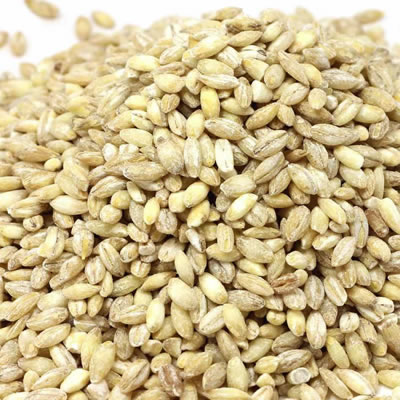
Beta Glucans
Also Known as β-Glucans
What are Beta Glucans?
Beta glucans are used as a food thickening agent, a source of dietary fiber, emulsifier, and a coating substance.2 They are a soluble fiber found in the cell walls of cereals, mushrooms, yeasts, algae, and seaweed.1
Beta Glucans are commonly found in cereal grains such as:
- Wheat
- Barley
- Rye
- Oats
Beta-glucan may be used in a powdered form and added to bread, cookies, cakes, muffins, or other baked goods.
Origin
Chemically, beta glucans are polysaccharides comprised of glucose linked via β-glycosidic bonds. Beta-glucans form long cylindrical molecules containing up to about 250,000 glucose units.
Function
A study conducted by Mohebbi et al. added beta-glucan to a white pan loaf formula. The addition of beta-glucan compared to a control of white bread was shown to increase shelf life and decrease staling.3 Sensory testing for the properties of the bread showed no significant difference.
Beta-glucan was used in the formula at 0.8, 1, and 1.2 percent.3 The results were:
- Increase in water absorption
- Similar development time to control
- Similar farinograph quality to control
- Increased dough softening
Beta-glucan can be added to bakery formulas to increase dietary fiber, extend shelf life, increase nutritional value.
Nutrition
Health claims for beta-glucan range from reduced risk of type 2 diabetes to improved heart health. An article in Today’s Dietitian research suggests a minimum of 4 to 6 grams of beta-glucans per day for weight management.1
Other health benefits may include:1
- Improved blood glucose control
- Insulin resistance
- Improved cholesterol levels4
- Improved gut function
The health claims depend on the source of the beta-glucan.1
Commercial production
Beta glucan is commercially produced by a high-temperature extraction with concentrated sodium hydroxide.2 This method of extraction was initially patented in 1973 U.S. Pat. No. 4,810,646.2
Application
The cell walls of yeast and the bran of whole grains are not the only sources. Beta glucans can be found commercially within the food and baking industry to modify food texture and as fat substitutes. As an additive, Beta-glucans are used in sour cream, salad dressings, frozen items, and cheese spreads as a stabilizing agent.
The FDA allows beta glucan to be used in a variety of baked goods, cereal products, and baking mixes and recommends the following:5,6,7
| Source of beta glucan | Uses | Level per serving |
| Bakers yeast | baked goods and baking mixes, cereal, and cereal products, | 200 milligrams |
| ganoderma lucidum mycelium | baked goods and baking mixes, cereal, and cereal products, | 150 milligrams |
| Oat Bran | whole grain and specialty bread, lite cookies, reduced fat crackers, reduced fat muffins, tortillas, taco shells, reduced fat snack chips | 0.75 to 3.0 grams |
FDA Regulation
The FDA categorizes beta-glucan under the following GRAS Notices depending on the source.
- GRN No. 239 Bakers yeast beta-glucan5
- GRN No. 413 Beta glucans derived from Ganoderma lucidum mycelium6
- GRN No. 437 Beta-glucans from oat bran7
References
- Webb, D. “Betting on Beta-Glucans.” Today’s Dietitian, May 2014, www.todaysdietitian.com/newarchives/050114p16.shtml. Vol. 16 No. 5 P. 16
- “US8753668B2 – Production of Beta-Glucans and Mannans.” Google Patents, Google, patents.google.com/patent/US8753668B2/en.
- Mohebbi, Z., Homayouni, A., Azizi, M., & Hosseini, S. “Effects of beta-glucan and resistant starch on wheat dough and prebiotic bread properties.” Journal of Food Science and Technology 55.1 (2017): 101-110
- Othman, R A, et al. “Cholesterol-Lowering Effects of Oat β-Glucan.” Advances in Pediatrics., U.S. National Library of Medicine, June 2011, www.ncbi.nlm.nih.gov/pubmed/21631511.
- “GRN No. 239 Bakers Yeast Beta-Glucan.” Accessdata.fda.gov, 22 July 2008, www.accessdata.fda.gov/scripts/fdcc/?set=GRASNotices&id=239.
- “GRN No. 413 Beta Glucans Derived from Ganoderma Lucidum Mycelium.” Accessdata.fda.gov, 10 Aug. 2012, www.accessdata.fda.gov/scripts/fdcc/index.cfm?set=grasnotices&id=413.
- “GRN No. 437 Beta-Glucans from Oat Bran.” Accessdata.fda.gov, 27 Jan. 2013, www.accessdata.fda.gov/scripts/fdcc/index.cfm?set=grasnotices&id=437.

